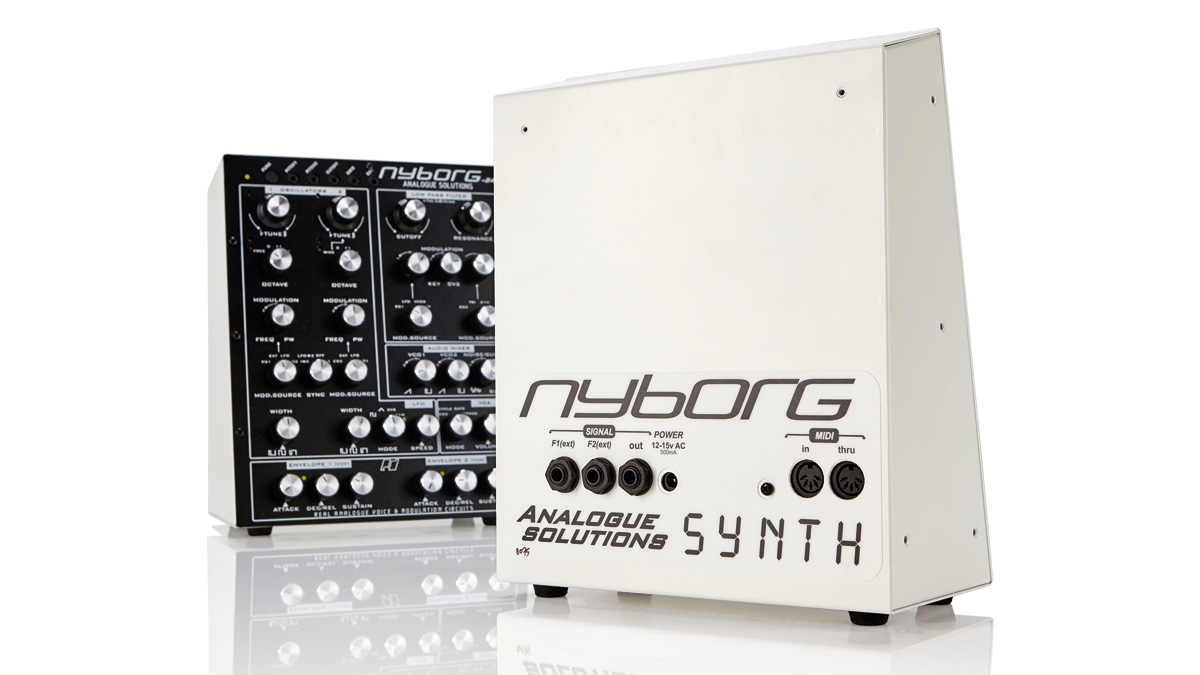MusicRadar Verdict
A well-built analogue rack synth with plenty of character and ample modulation possibilities.
Pros
- +
We loved the multimode feature.
Cons
- -
Very few.
MusicRadar's got your back

Analogue Solutions Nyborg 12 Module

Analogue Solutions Nyborg 12 Module
Analogue Solutions has been a purveyor of home-grown and well-regarded analogue synths for over ten years.
The key thing that connects its gear is the heavy reliance on discrete electronics in its synth designs. This means they eschew the use of digital circuitry in all but the necessary nod to the modern world in the form of MIDI interfacing. This also means no CPU control of envelopes or LFOs, and not a DCO in sight. It's old-school analogue.
The unit up for testing here is the Nyborg 12.
The units arrives in a market that is seeing an ever growing number of 'real' analogue synths, from Korg's large-scale resurrections to boutique modular units - so competition is fierce. According to Tom Carpenter, the man behind Analogue Solutions, the Nyborg 12 and 24 were created in response to the demand for smaller, lower-budget instruments, but that didn't compromise on sound.
So, in many respects the Nyborg 12 is very much a trimmed-down Telemark. You lose the patching sockets and Ring Modulation option, which of course makes for less flexibility, but there are some gains, as we'll see.
The Nyborgs employ two multi-waveform, independently tunable oscillators combined with a square wave sub-oscillator and noise source. The Audio Mixer section allows you to adjust oscillator level and waveform selection (sawtooth of pulse) for each oscillator, and add the sub or noise into the mix, but sadly not both at the same time - this is perhaps an inevitable compromise on such an instrument.
There is plenty of flexibility in the VCO tuning department, including the option of turning either oscillator into an LFO-like mod source. The reasons become clearer when you turn to the modulation switches, which allow one VCO to modulate the other (and vice versa) and for them also to come under the control of an external audio source or the built-in envelopes.
In each case you can choose the modulation source to be routed to changing oscillator frequency or pulse width. Oscillator Sync is equally flexible, and even includes the possibility of VCO2 slaving to the LFO. Besides the PWM option, oscillator pulse-width can be dialled in manually for each VCO.
The filters section is where the two Nyborgs part company and, though VCOs play a massive role in any synth's overall character, it is here that you find two different classic approaches to tonal shaping.
The Nyborg 12 employs a two-pole 12dB/octave multi-mode filter. This means that on paper it should have a more polite tone than the 24, but with the flexibility afforded by the possibility of switching between four different filter configurations - low-pass, high-pass, band-pass and notch (with a dedicated control for adjusting the relative mix of low and high-pass filters that contribute to this shape).
As many 12dB/octave filters tend to be quite tame on the resonance front, the Nyborg 12 features a Q Boost switch which pushes things into somewhat nastier territory. AS mention that this is worth trying with VCO2 as a mod source (a form of cross-modulation) - nice! The modulation possibilities in the filter section are again quite extensive.
The Nyborgs have two, three-stage (Attack, Decay/Release and Sustain) envelope generators. Although available for other modulation duties, EG1 is primarily intended for controlling the filter (in the 12 it's the only EG available for this) and EG2 for controlling the VCA (for amplitude changes). One nice feature in the VCA section is the possibility of having the VCA triggered by a note-on or gate signal (with or without the full envelope shaping) or re-triggered by the LFO.
The final part of the sonic equation is the LFO which has triangle and square wave modulation signals. You can also route Sample and Hold or CV2 (velocity) signals to the VCF and VCOs. See below for more on MIDI and other connectivity.We found the 12 was a lot of fun to use and were drawn to its multimode filter.
While these synths are not especially cheap, both are more flexible than they perhaps first appear- and you're getting a well-made, hand-built 'true VCO' synth that should last a lifetime. The Telemark offers more scope for experimentation, but is therefore more complex (and more expensive), and there is a lot to be said for keeping things patch-free.

“We were able to fire up a bass sound that was indistinguishable from the flavour of New Order’s Blue Monday in seconds”: EastWest Sounds Iconic review

“How long did it take me to get over it? Oh, quite a while”: Brian May on the “supreme injustice” of Roger Taylor’s Queen B-side "making as much money as Bohemian Rhapsody"

“Clem was not just a drummer; he was the heartbeat of Blondie. He was a source of inspiration both on and off the stage”: Clem Burke, drummer for Blondie, dead at 70









